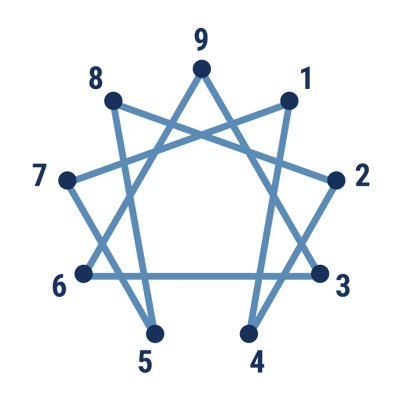I’ve been taking a 6-month course with Dr. Daniel Siegel called “Interpersonal Neurological Biology (IPBN).” Known also as relational neurobiology, IPNB is an interdisciplinary framework associated with human development and functioning. It was developed in the 1990s by Daniel J. Siegel who sought to bring together a wide range of scientific disciplines in demonstrating how the mind, brain, and relationships integrate to impact one another.
Mary Anne and I met Dan Siegel at an Enneagram conference in Silver Spring, Maryland, in 2008. He was the keynote speaker and had begun to do work with Dr. David Daniels, one of our Enneagram teachers, on the brain, attention and the 9 Enneagram Types. His practice called the Wheel of Awareness is a tool for cultivating increased focus, presence, and inner peace. The practice encourages you to experience being aware of awareness itself. By doing this practice, you learn the difference between the experience of being triggered by an event or situations and the awareness of yourself in that very moment.
By making this distinction, you are able to shift attention to a more open, receptive stance and gain enough distance from the situation enabling you to shift from an automatic knee-jerk reaction to a more conscious, intentional response.
This resonates deeply with our work with the Enneagram. As you have heard us say so often, “energy follows attention,” and this practice offers a way to trace the energy flow rather than stay stuck on the actual event that you are experiencing.
The Wheel of Awareness mindfulness practice, which is an enhancement to the 3-Centered Practice we have shared with you, begins with checking in with your 5 senses (sight, hearing, smell, taste, and touch) and doing a scan of your outer body. The next step is to connect in with what Siegel calls our 6th sense, our gut sensations— breathing/respiration, heart, muscles, bones, blood, etc. This shift of attention brings you inside of yourself and to paying attention to what is going on inside of you. Next, you shift your attention to the 7th sense, which he calls “mental activities” (the Head Center) that include thoughts, feelings, memories, beliefs, emotions, images, plans, and anything else on your mind. Lastly, you shift your attention to the 8th sense that Siegel calls “interconnectedness” (the Heart Center), which is the ability to connect to yourself, your neighbors, and all other humans, and to open up the Heart Center to compassion and kindness to yourself and others.
By doing this mindfulness practice, you build your muscles of self-awareness and self-observation, and you can call upon this practice whenever you notice you are “off,” triggered and reactive, or needing a “time out.” Most importantly, you build an inner capacity to distinguish between what you are experiencing and how it is impacting you, thus giving you greater choice and freedom in the moment.
I am loving my IPBN study as it has added some tools for my tool bag when working with individuals who are feeling stuck, wanting to change their situations, in a transition, or seeking more fulfillment, happiness or success in their work, relationships and life. If you find yourself in any of these situations, we’re only one phone call away! I look forward to sharing more of these tools and practices with you in future posts and in our work together.
Theresa Gale
PRINCIPAL, TRANSFORM, INC.




